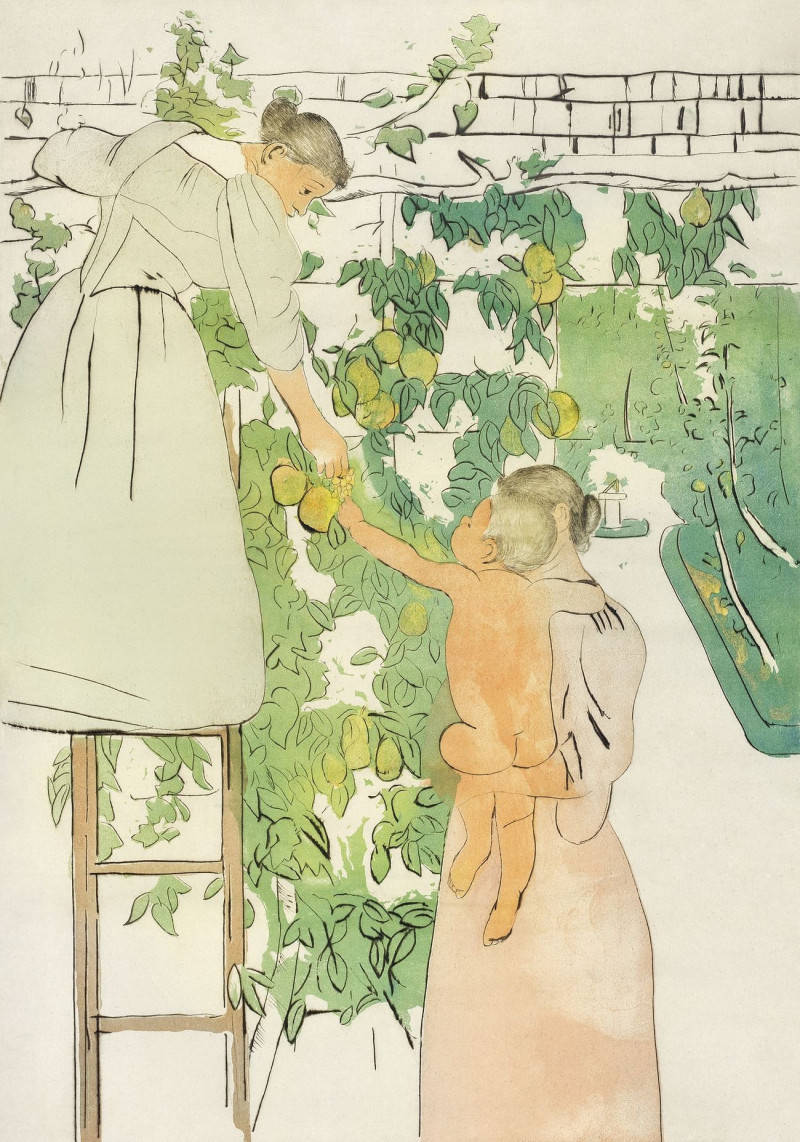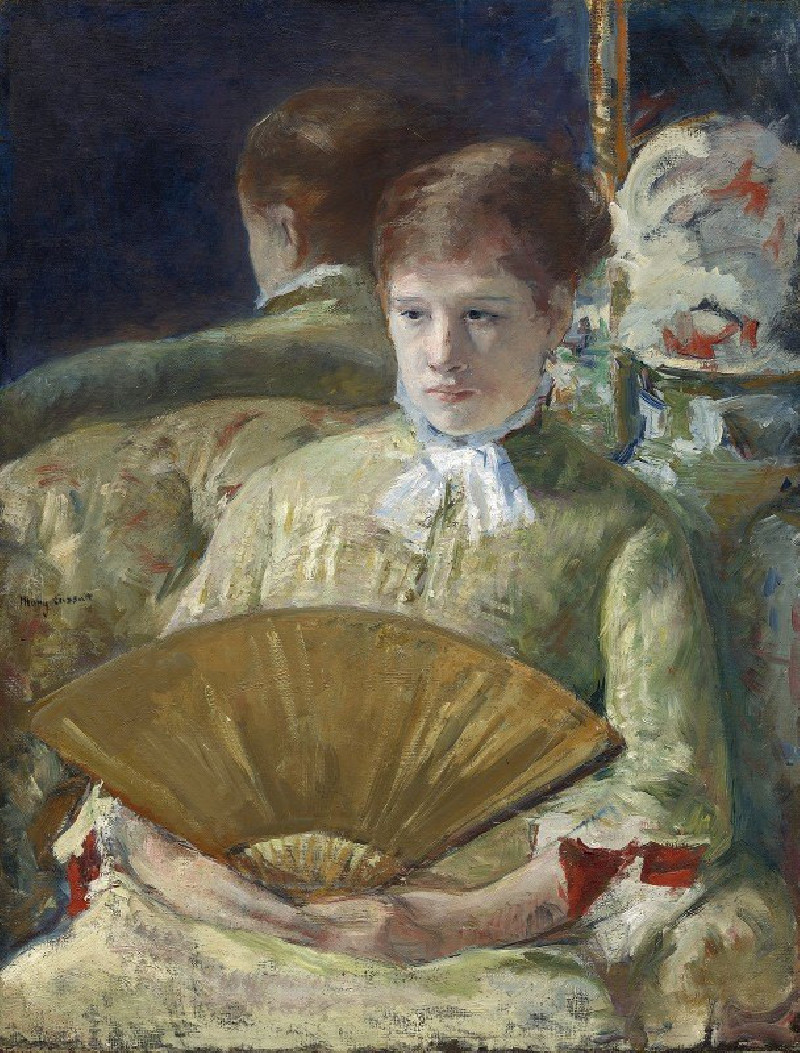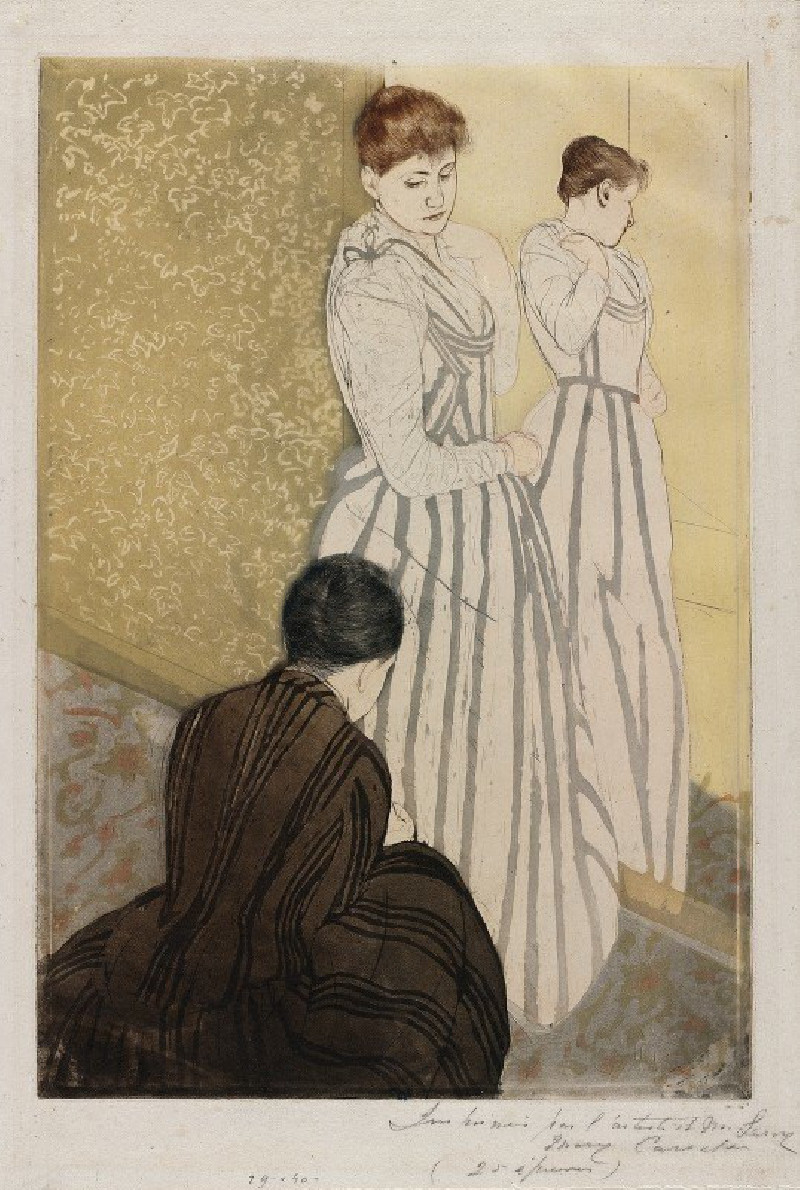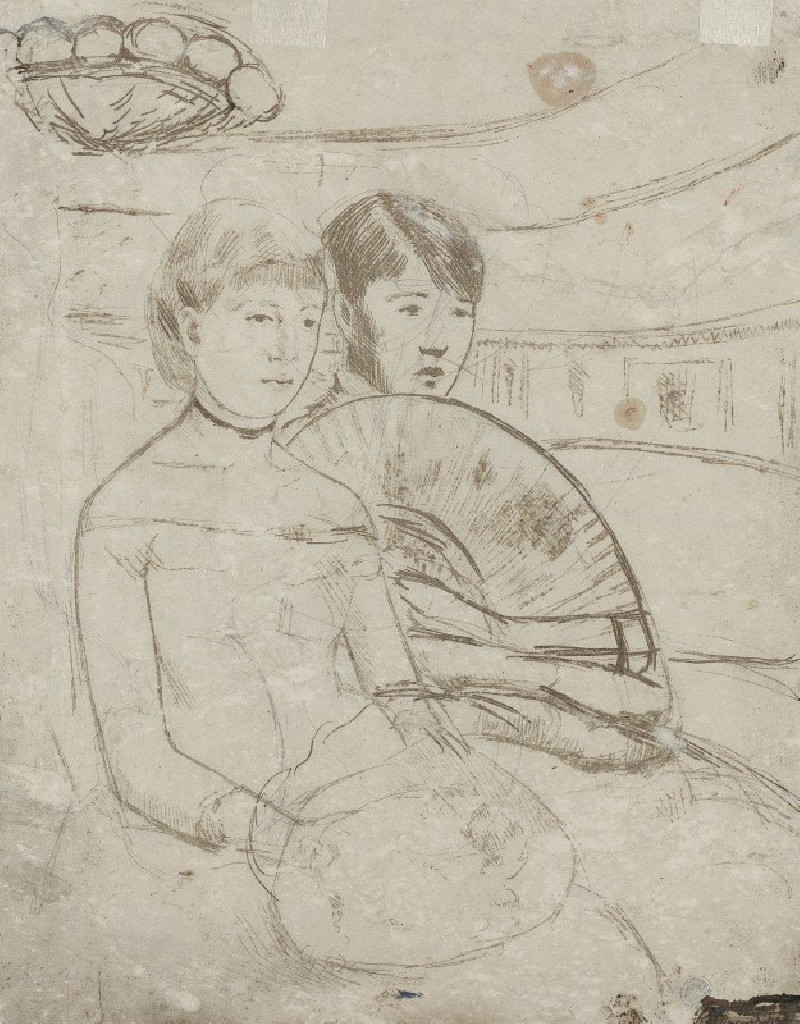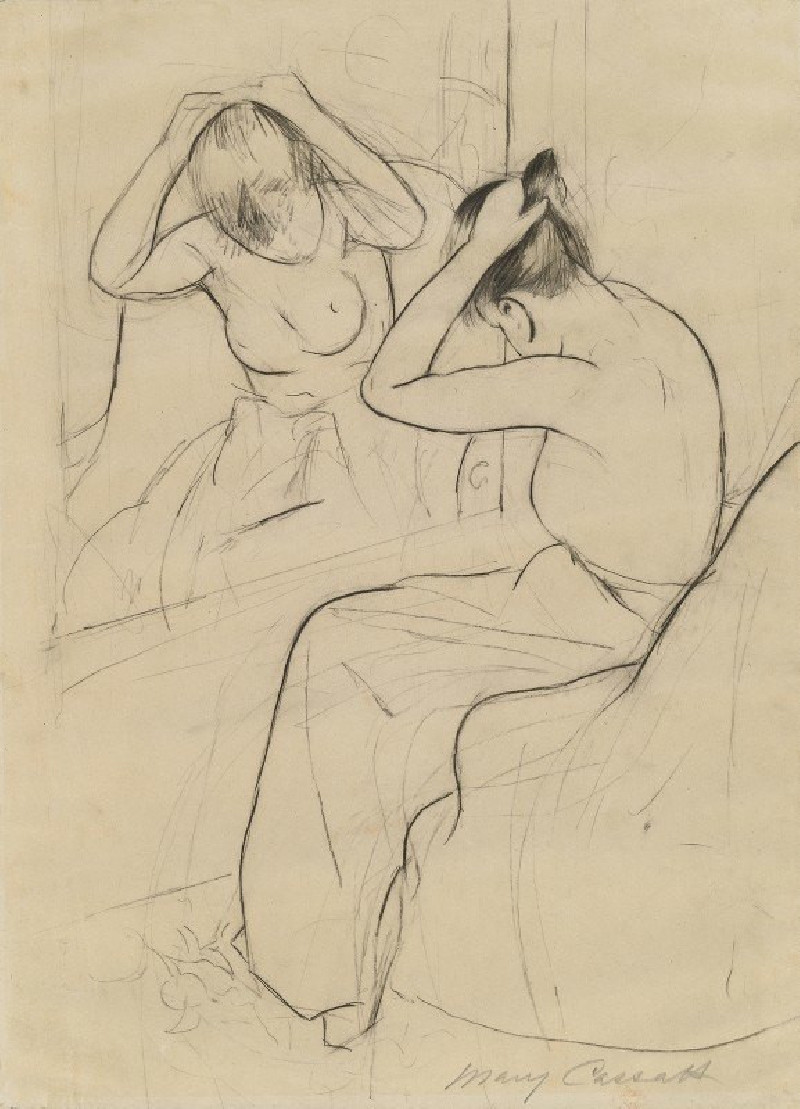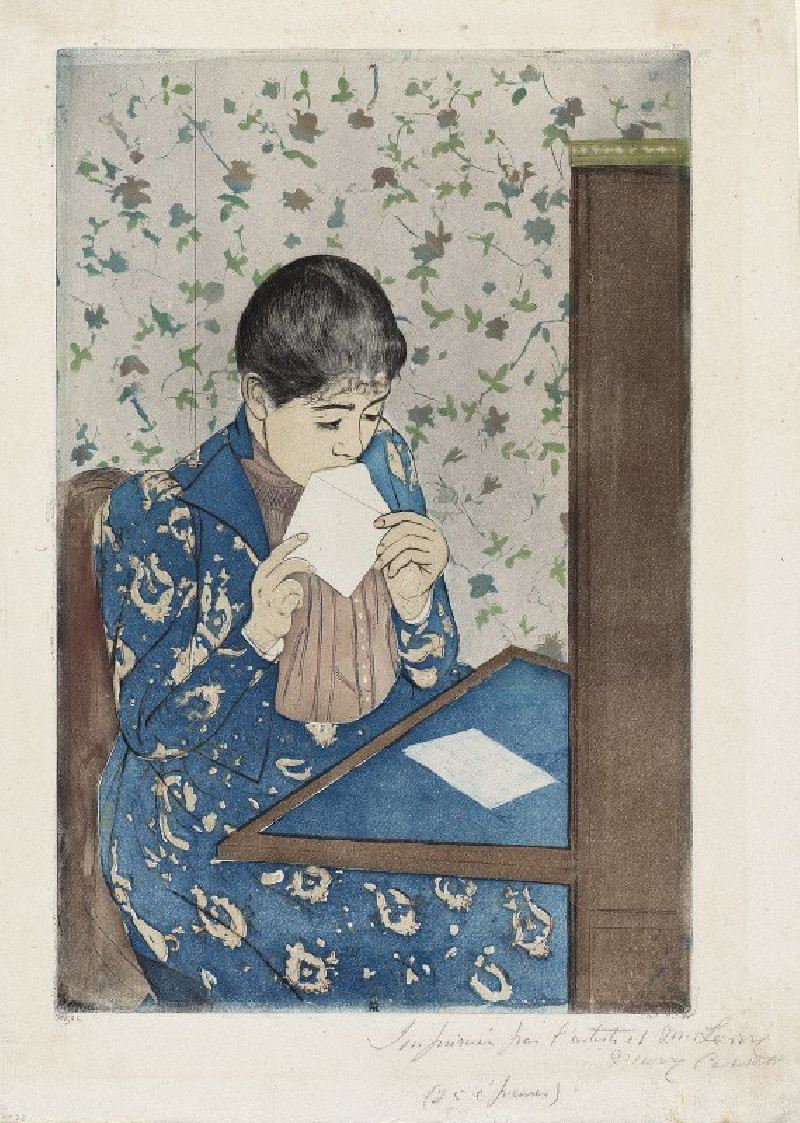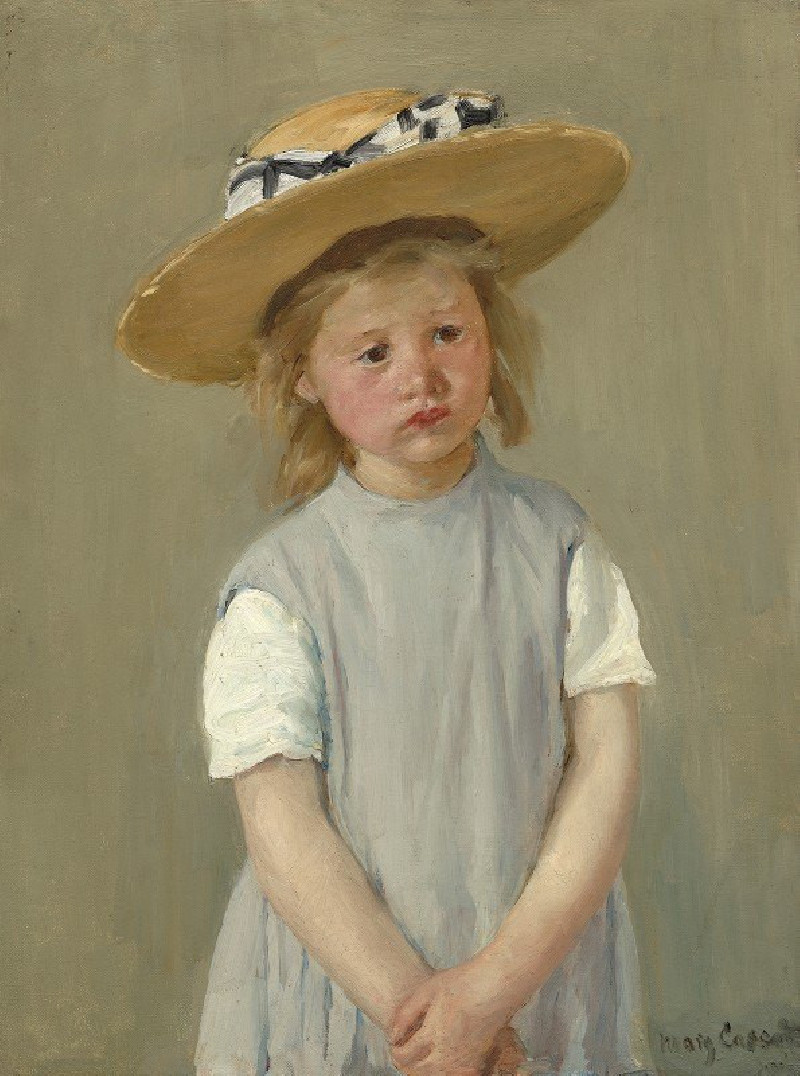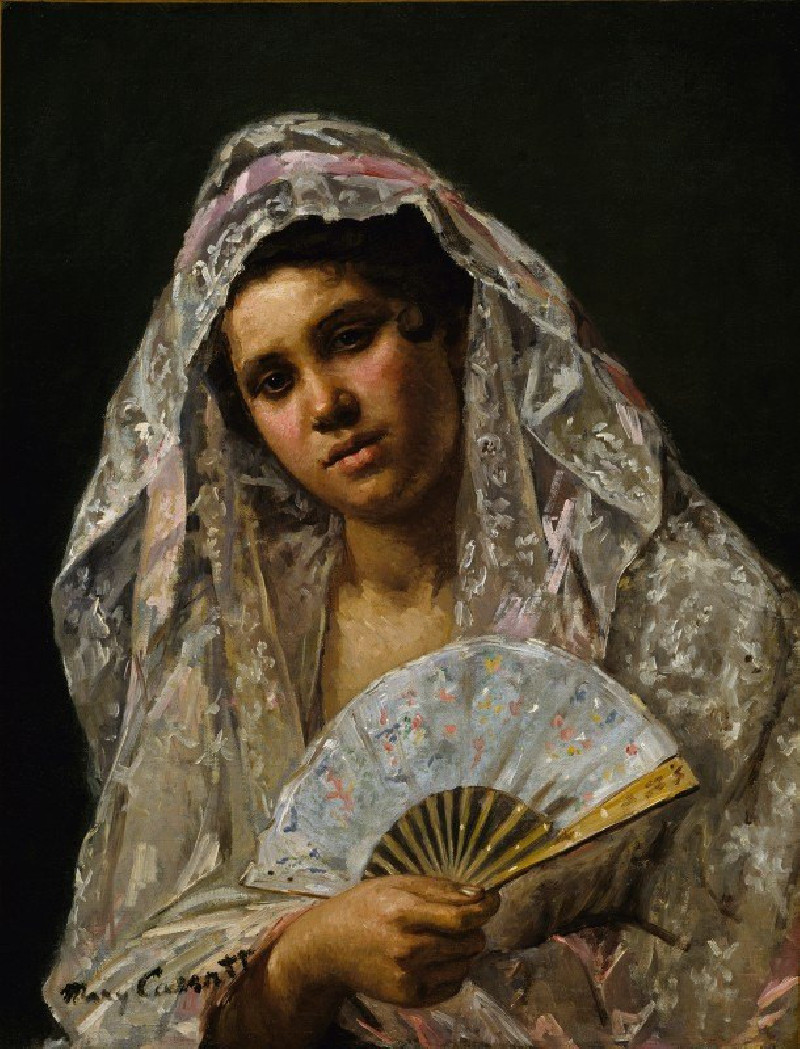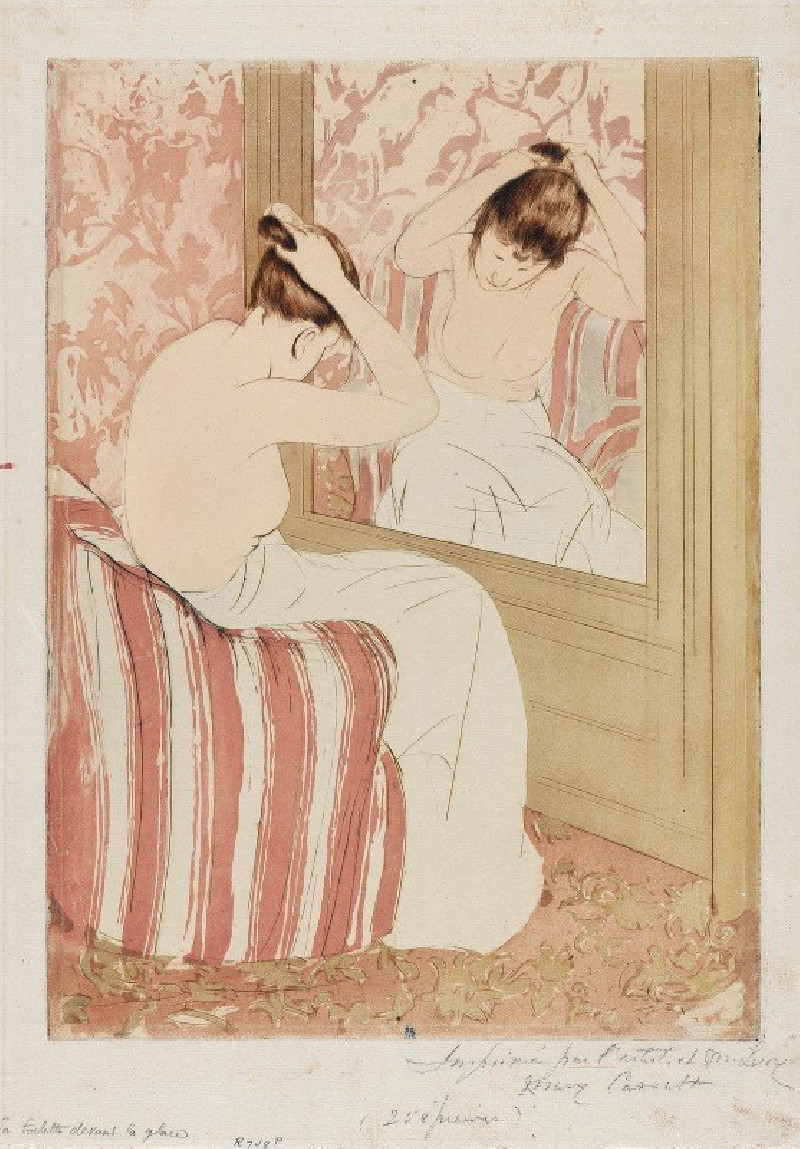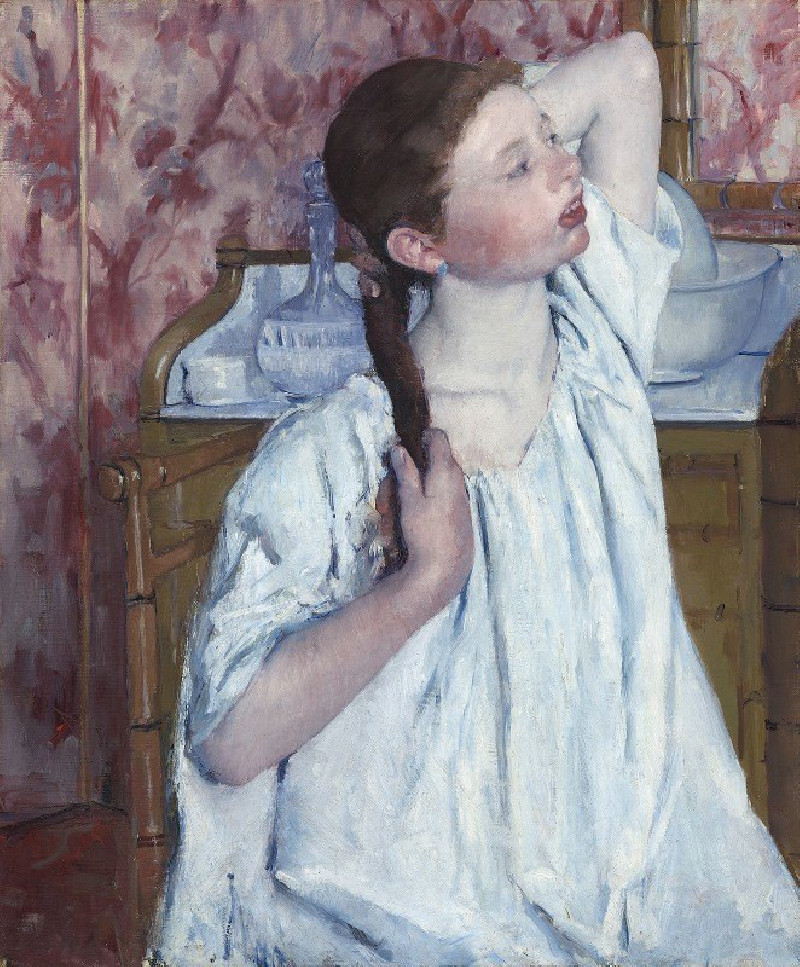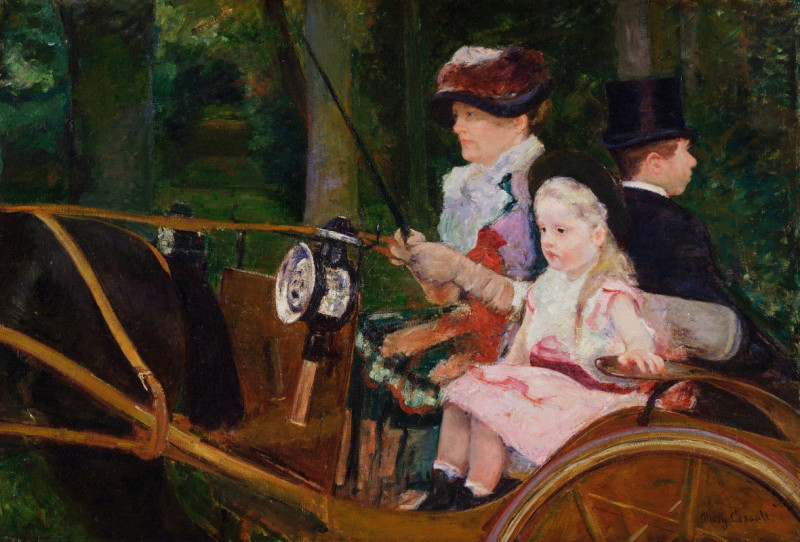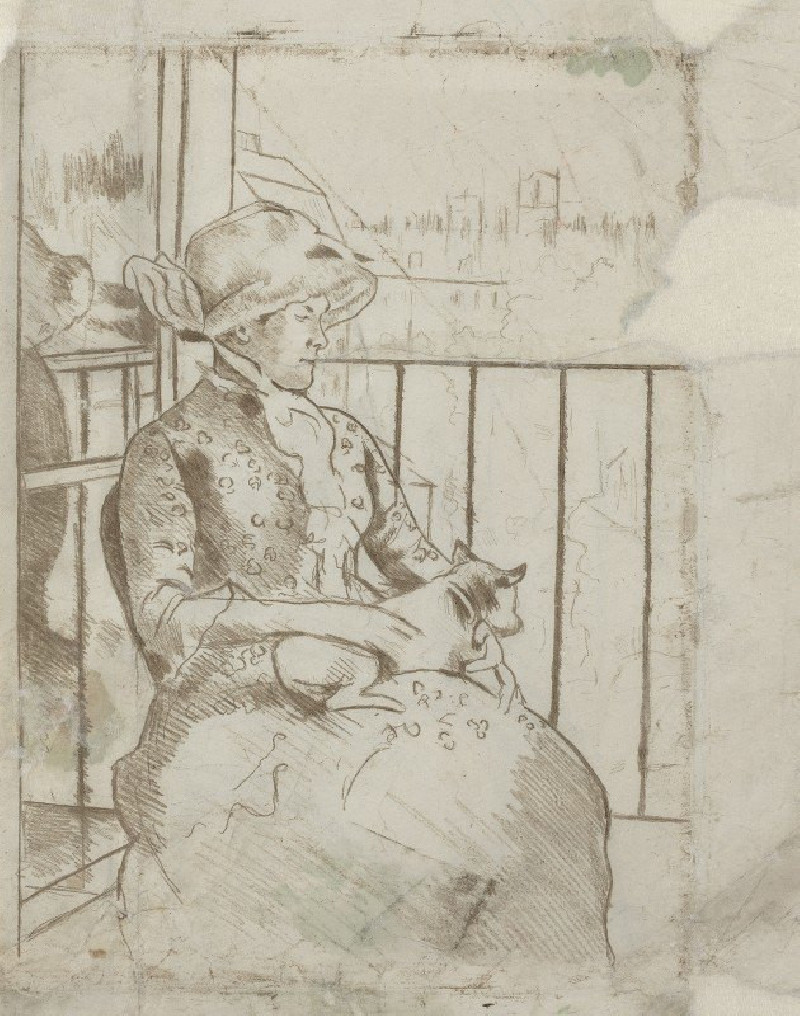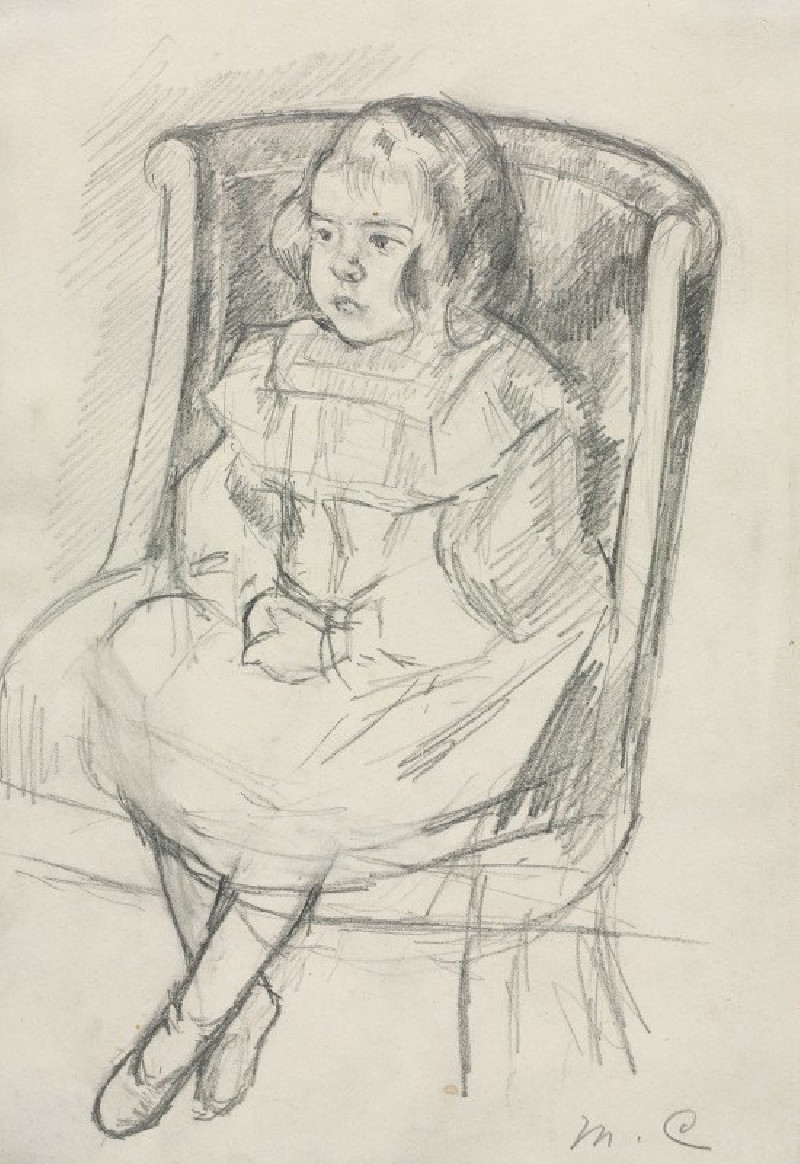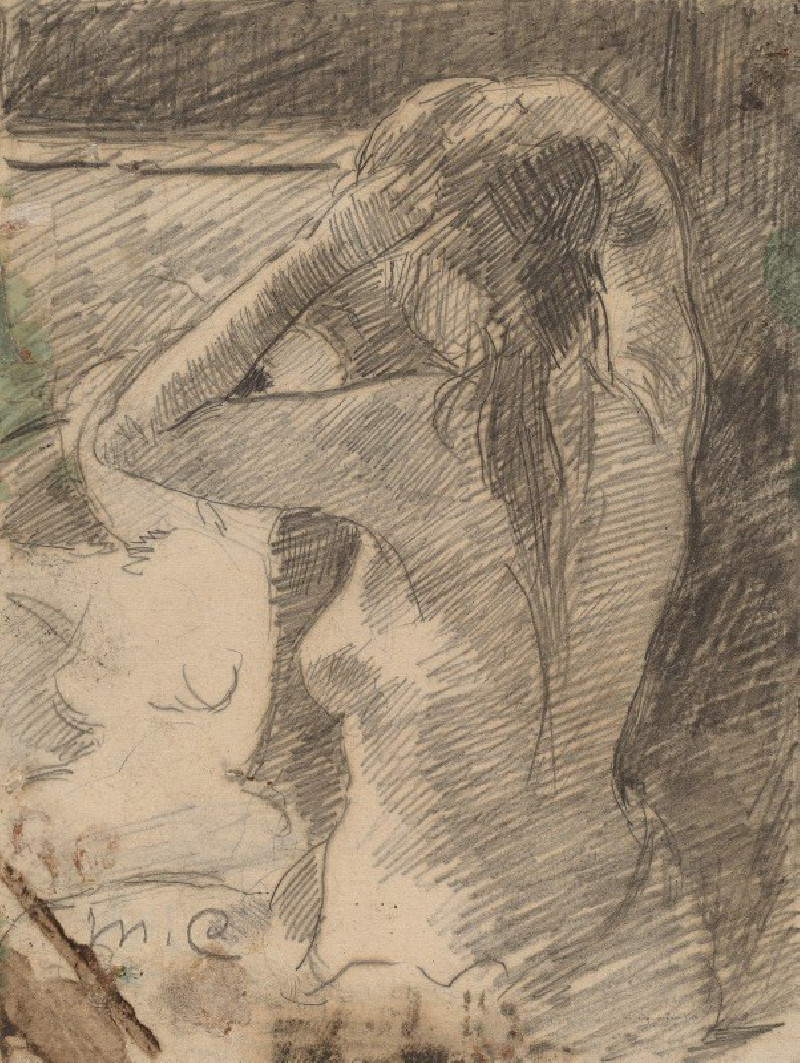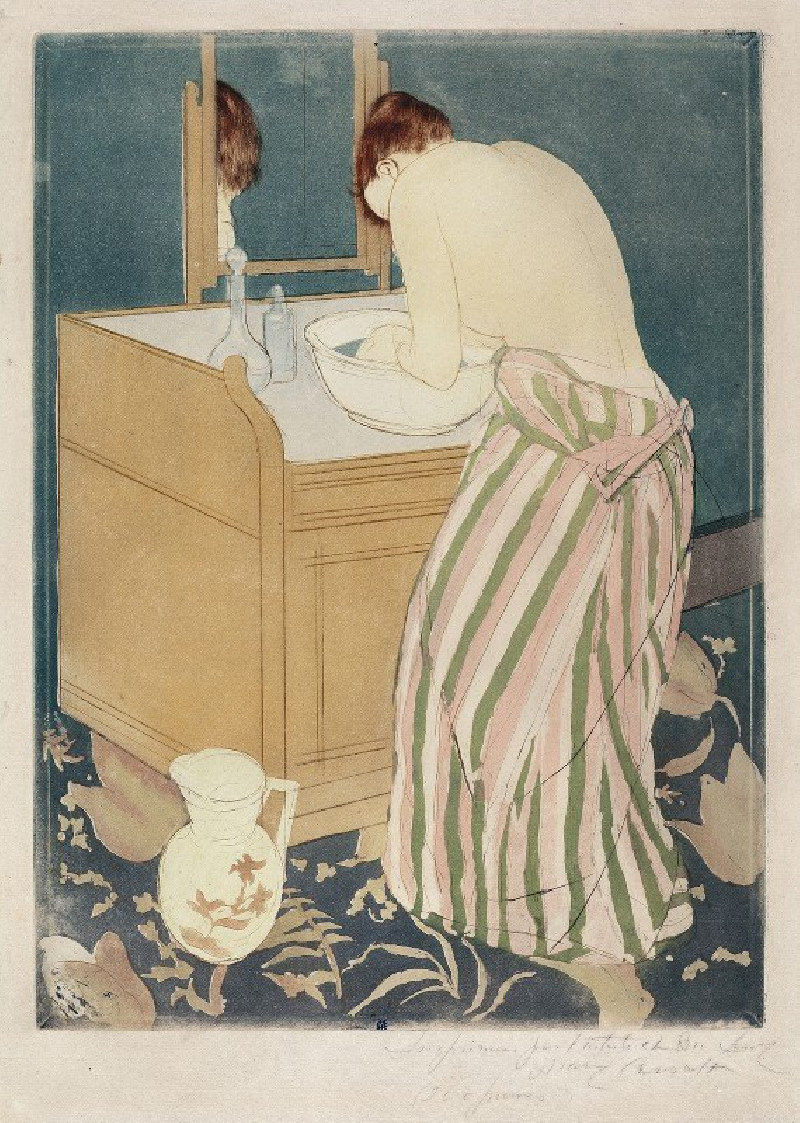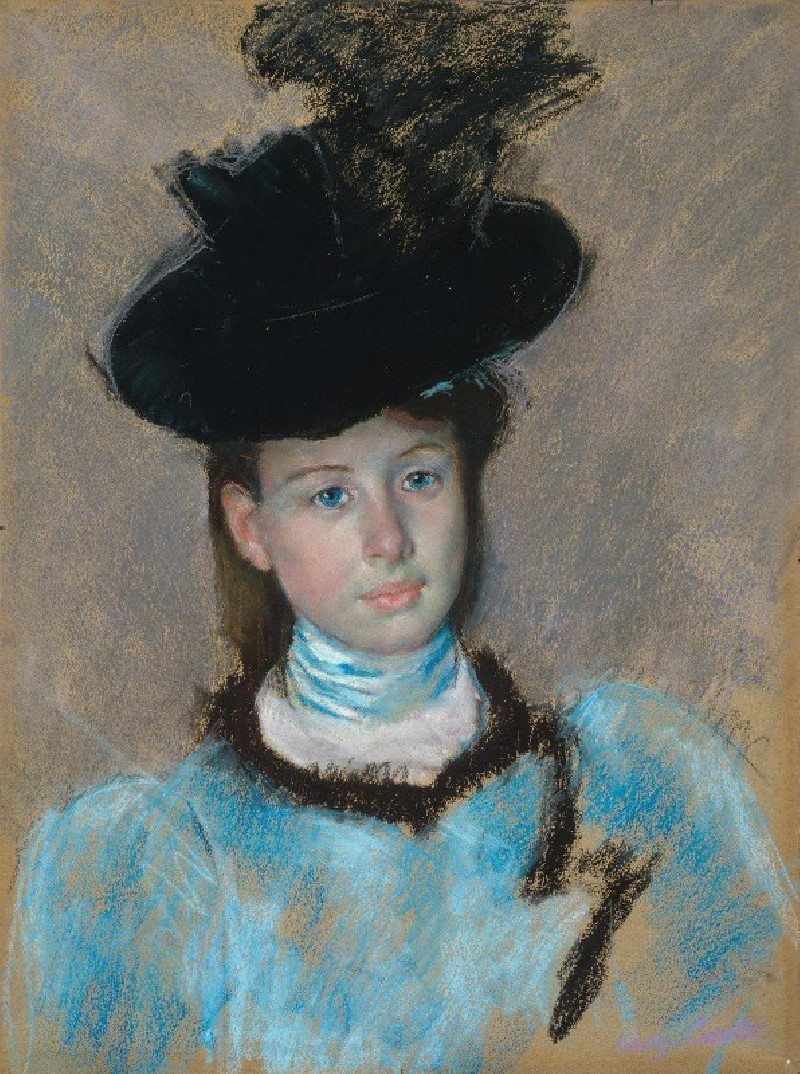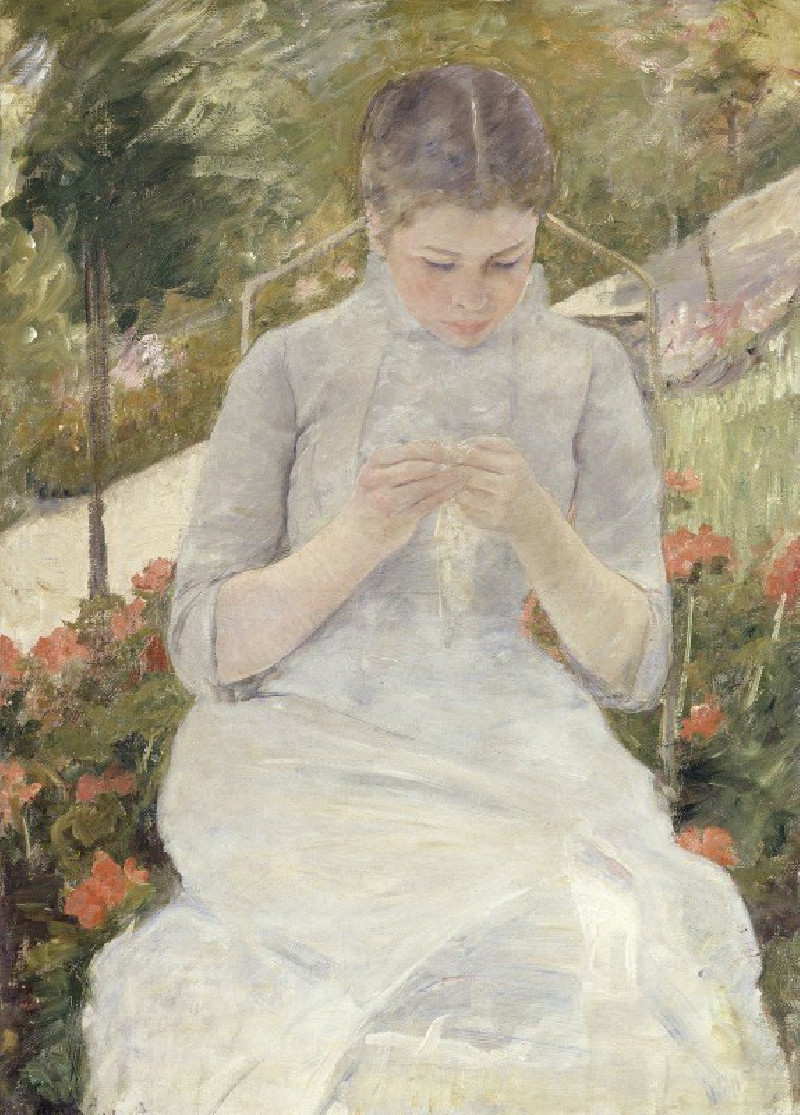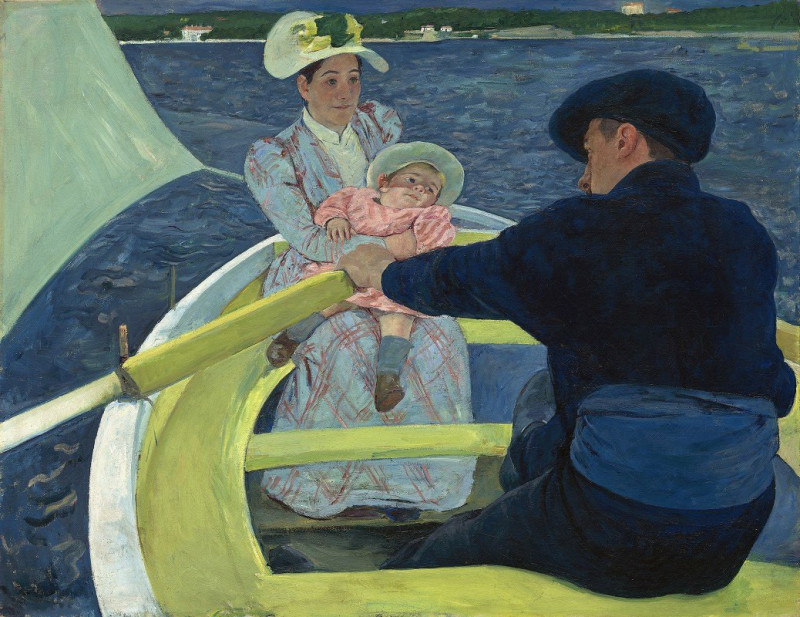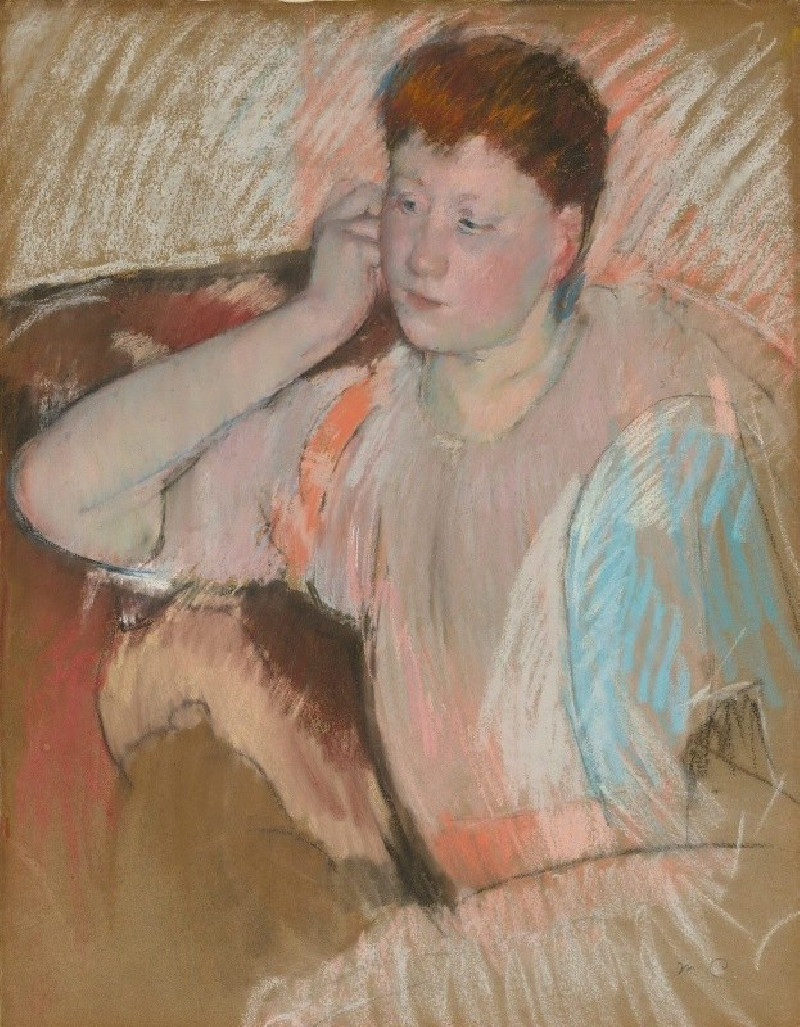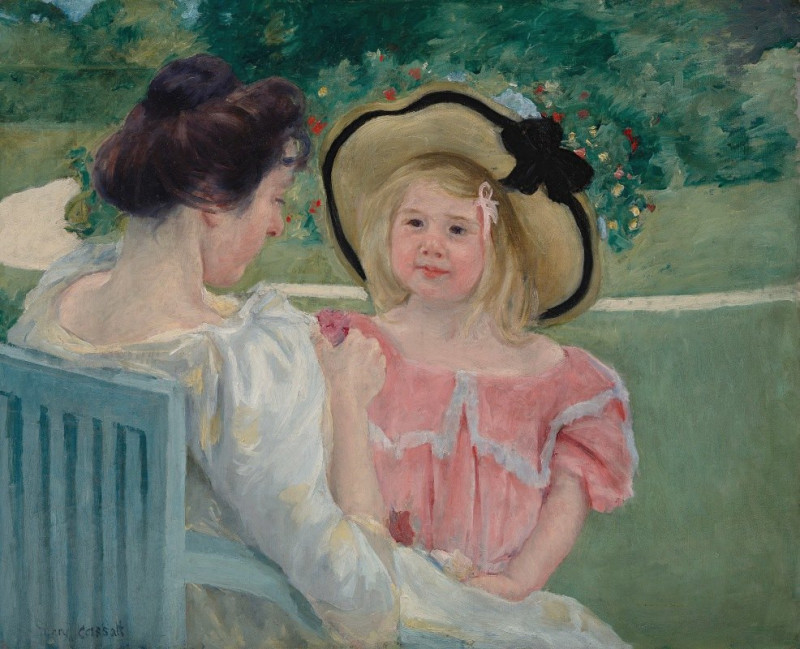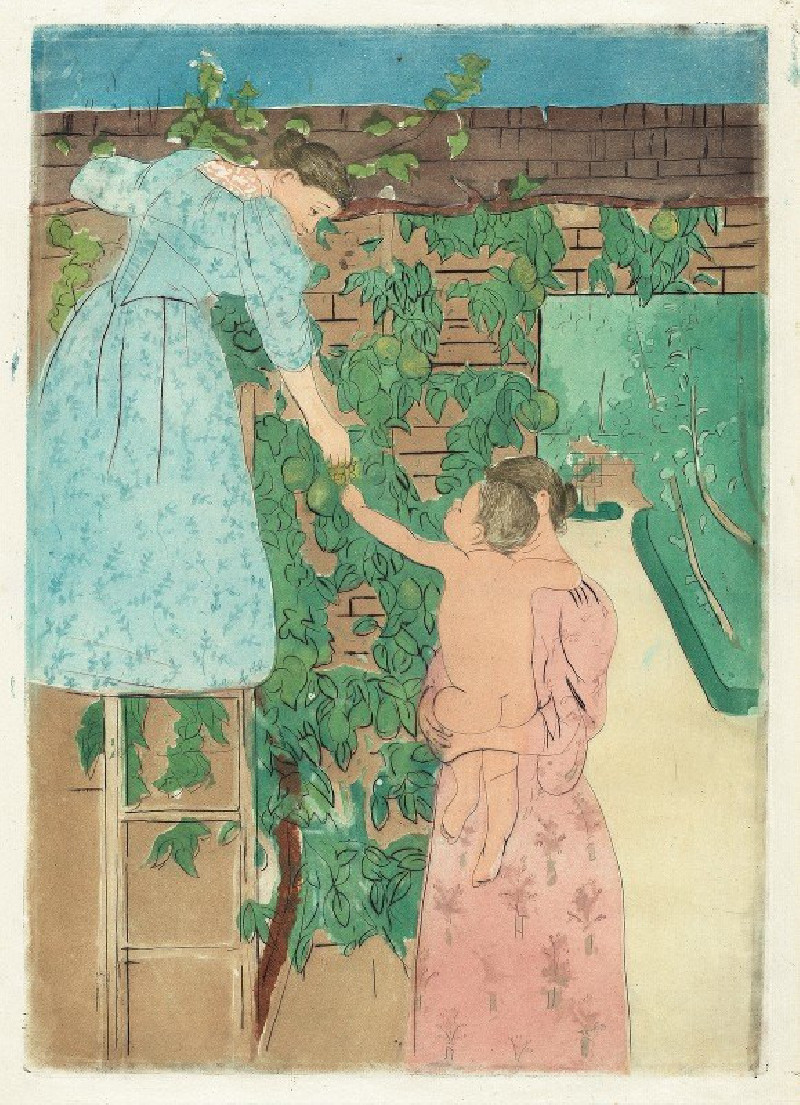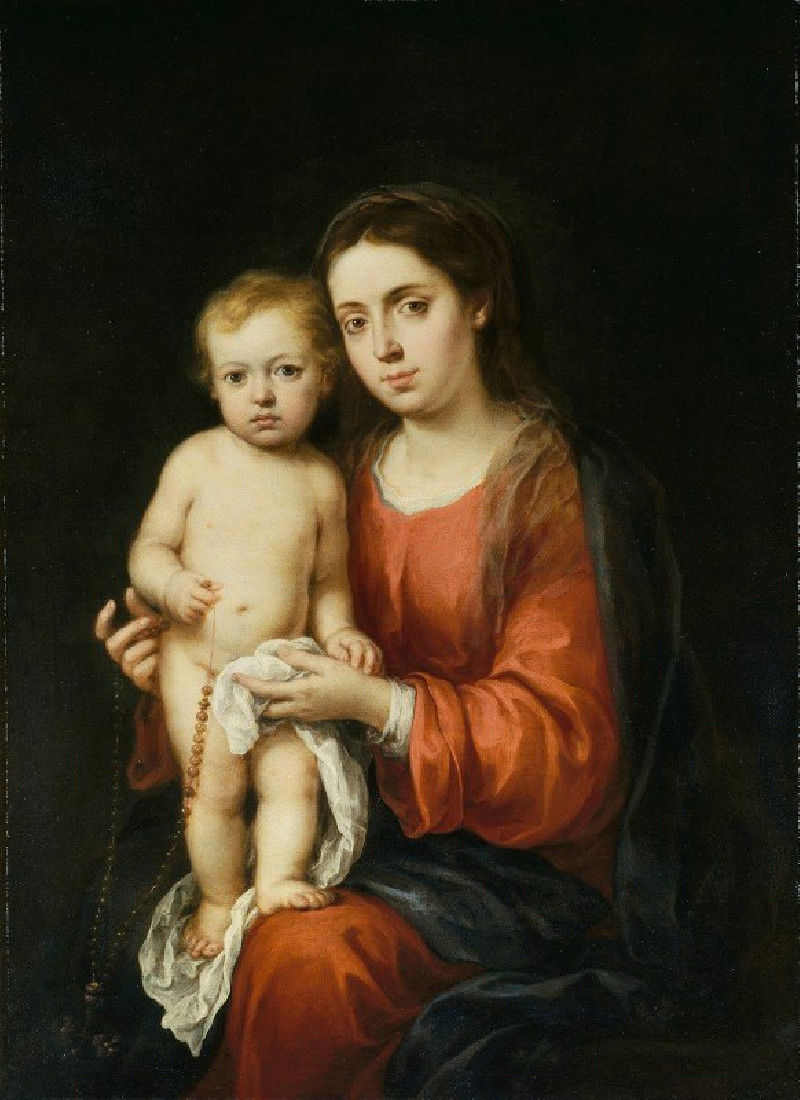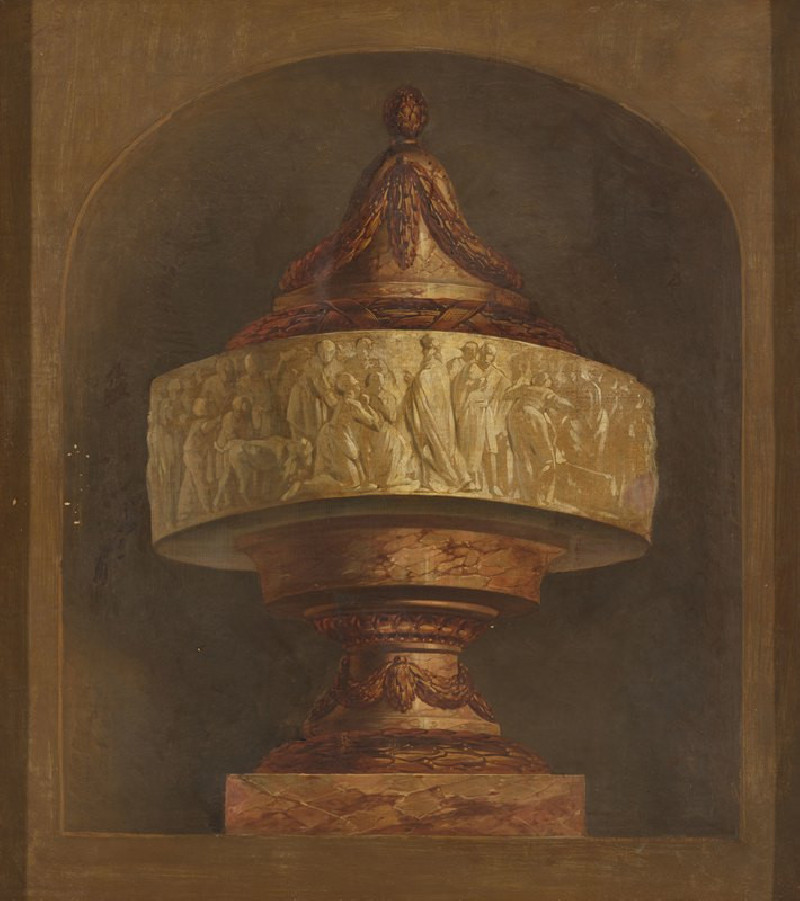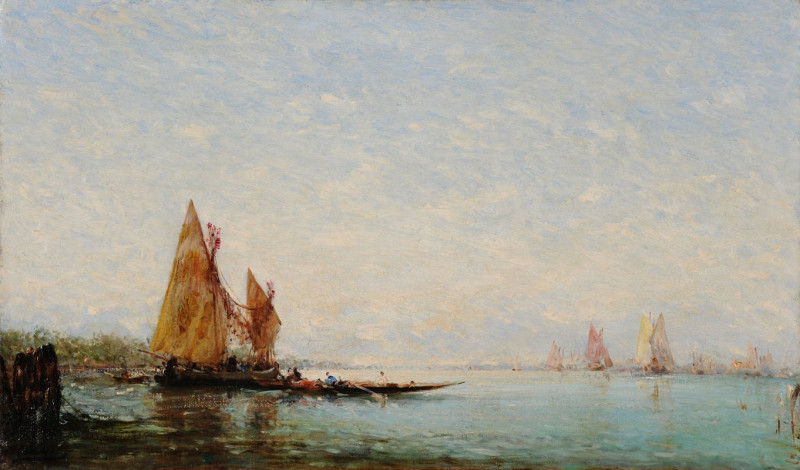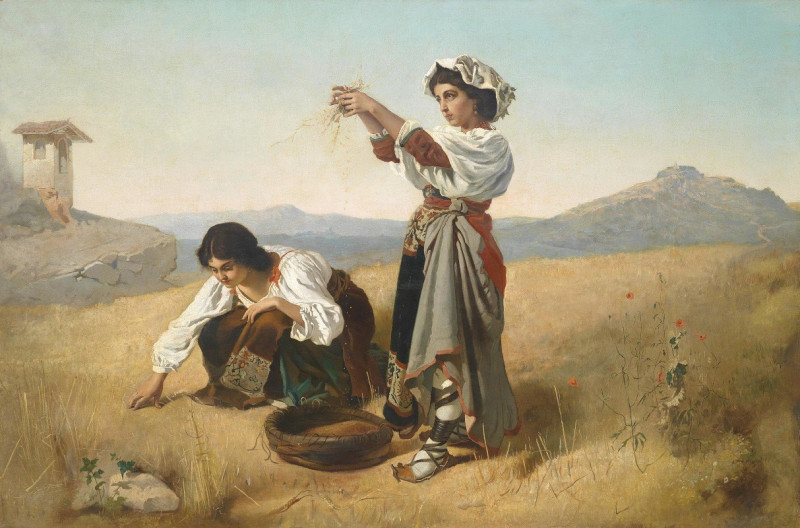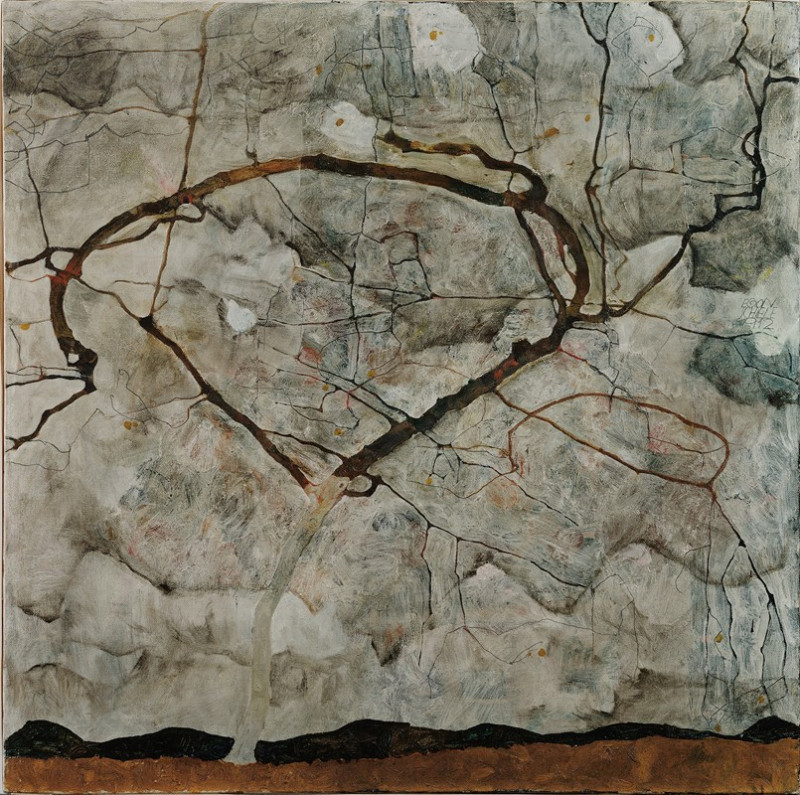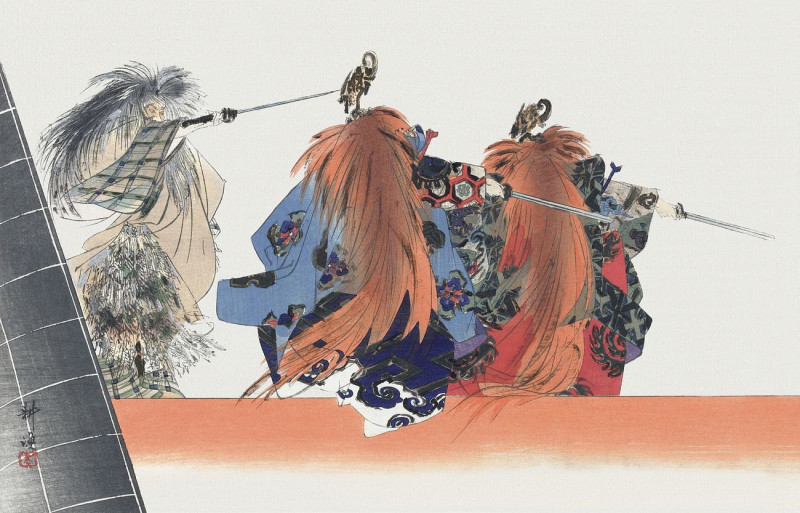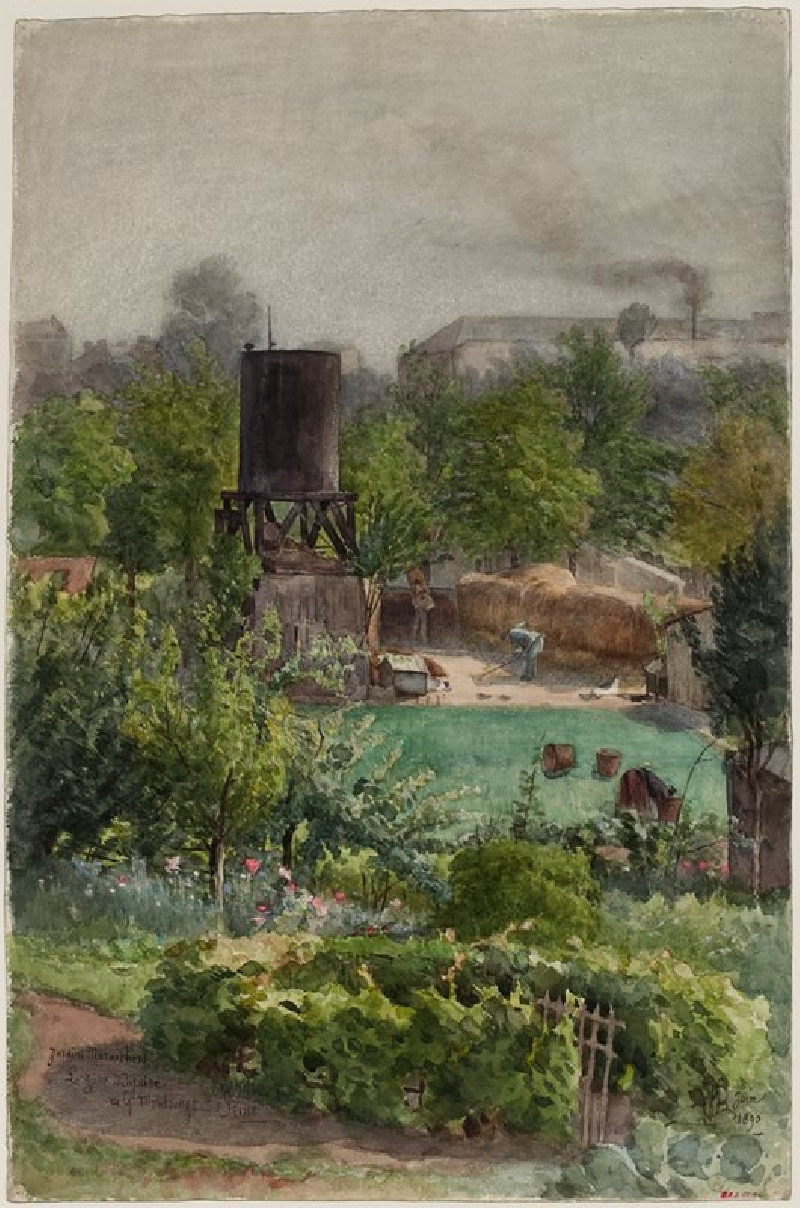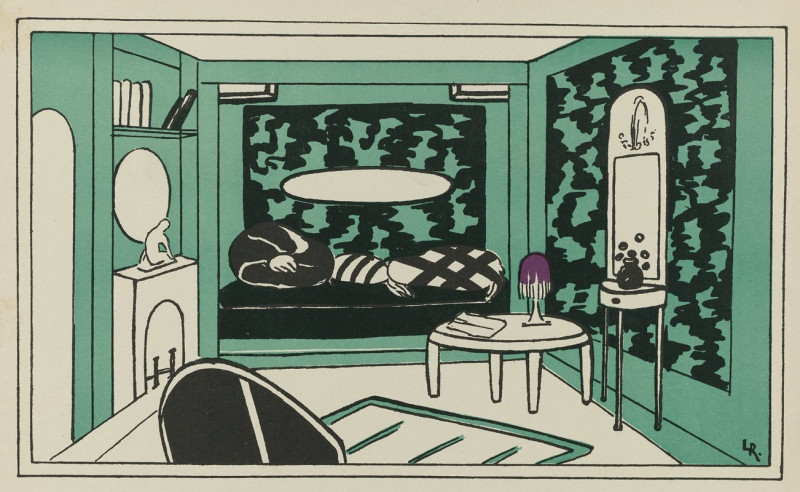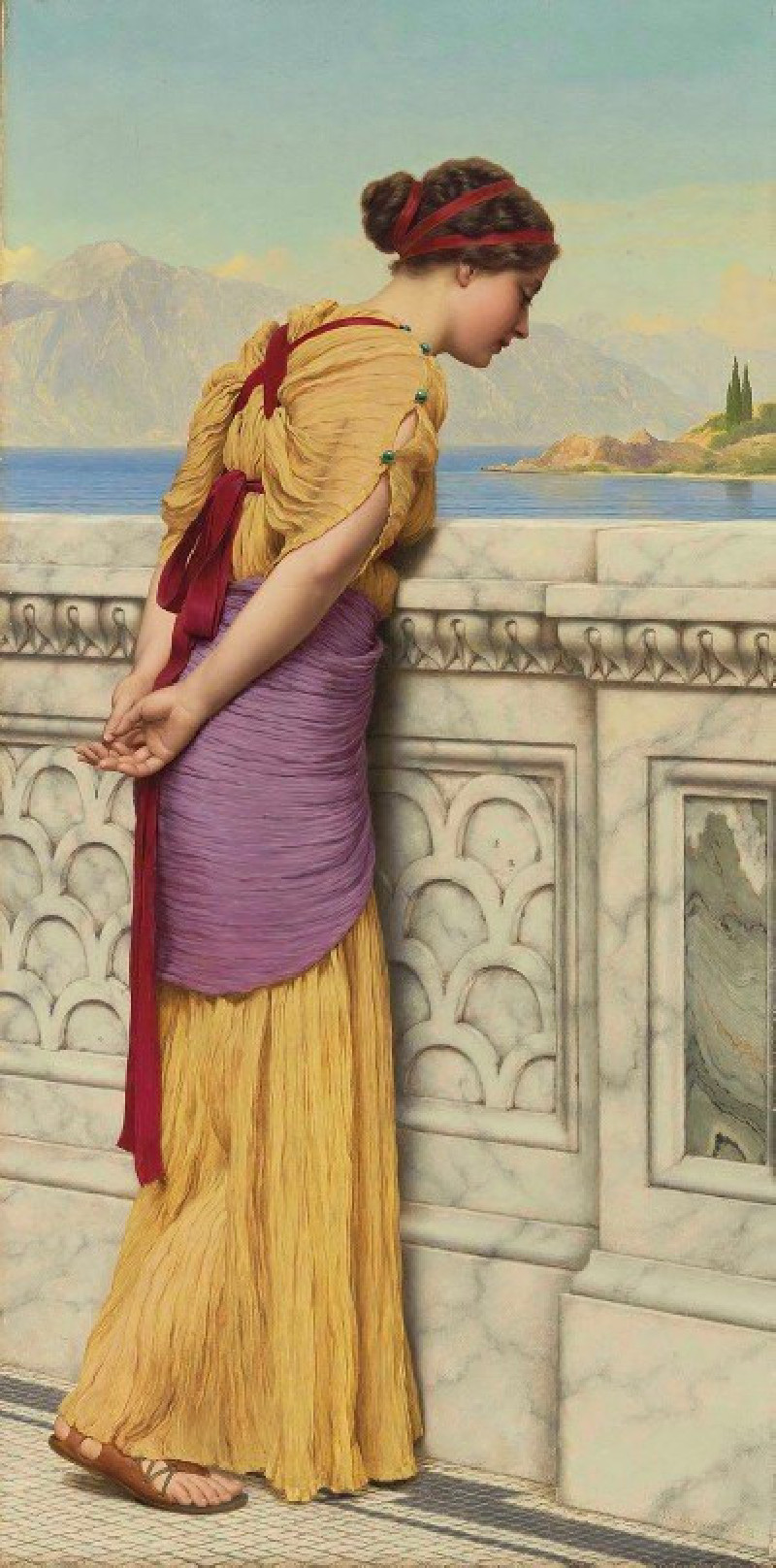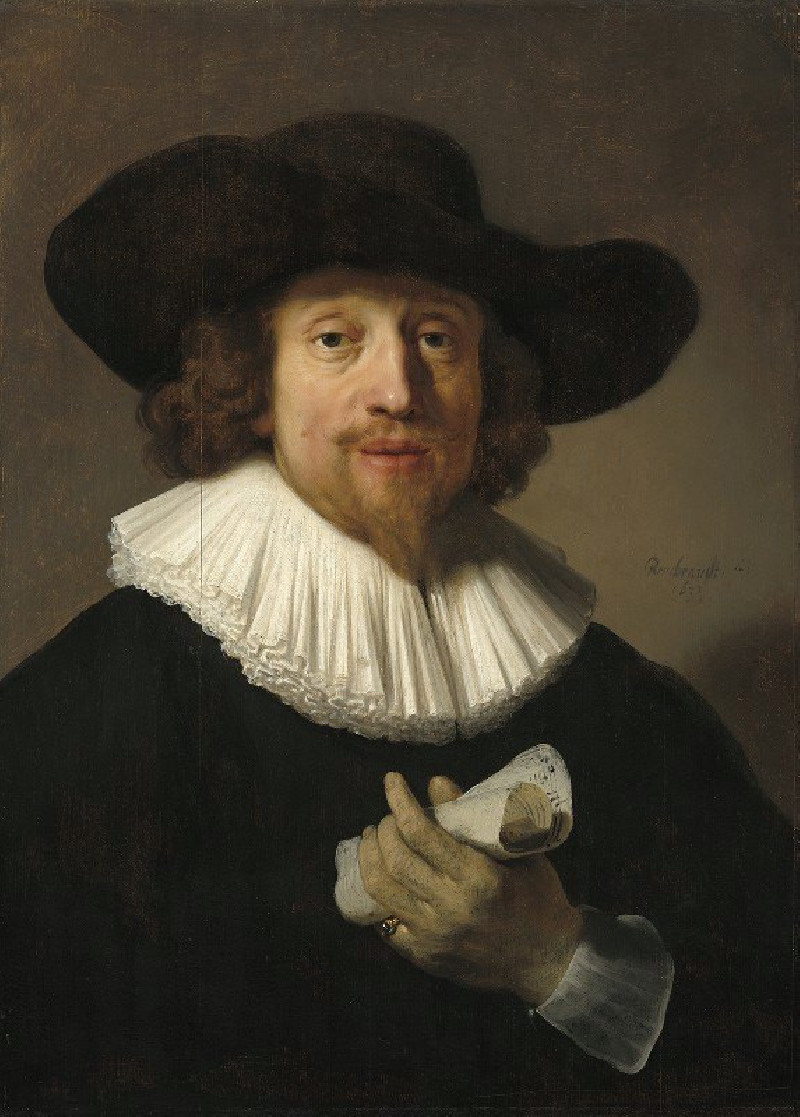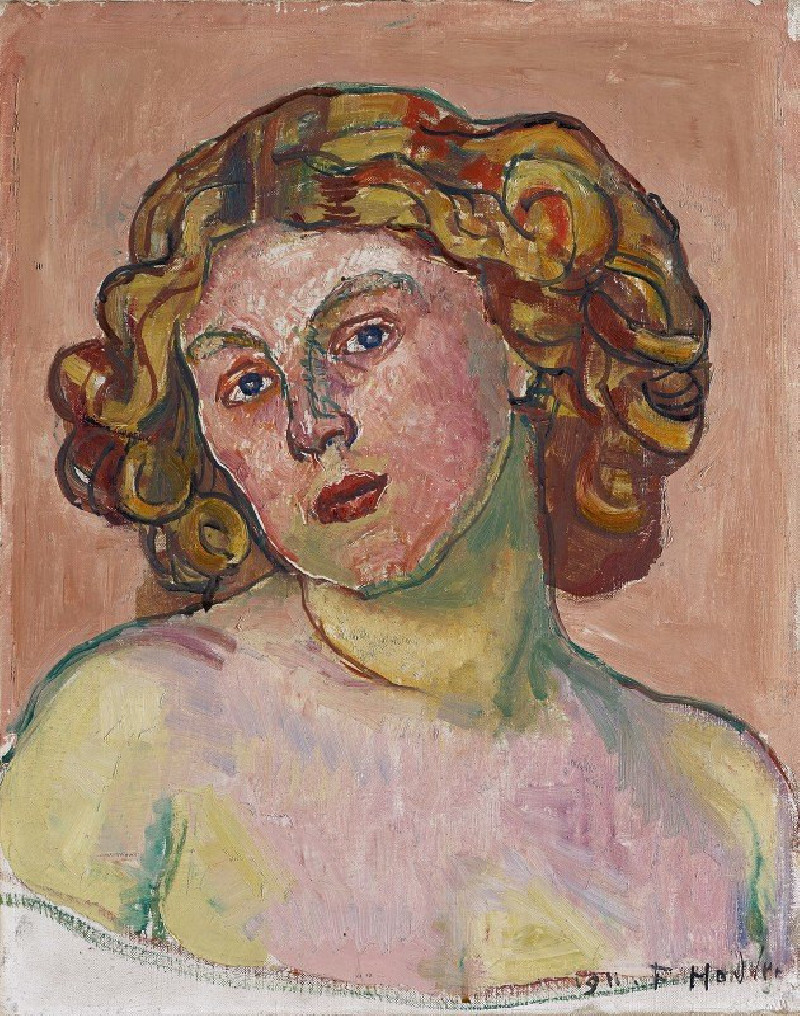Gathering Fruit
Technique: Giclée quality print
Recommended by our customers
More about this artwork
The painting "Gathering Fruit" by Mary Cassatt depicts a serene and intimate moment between two figures in an outdoor setting focused on collecting fruit. The artwork, rendered in a gentle, somewhat muted palette, captures the essence of daily life with a hint of impressionistic influence characteristic of Cassatt's style.In the foreground, we see two figures – a woman standing on a stool and a child next to her. The woman, dressed in a light-colored dress with her hair pulled back into a bun, is reaching up into a lush green fruit tree, stretching her arm to pick the fruit. The child, appearing eager and involved, reaches up towards the fruit as well, mimicking the woman’s action. Their gestures suggest a teaching moment or shared activity that is both simple and affectionate.The backdrop is subtly detailed, featuring a glimpse of a white fence and a garden-like environment that fades into dreamy washes of green and blue hues, evoking a tranquil, pastoral atmosphere. The use of light strokes and the delicate interplay of colors enhance the tender quality of the scene, focusing on the connection between human experiences and nature.Overall, the painting conveys a sense of peacefulness and the pleasure found in everyday tasks, highlighting themes of nurturing and the innocence of childhood – elements often celebrated in Cassatt’s body of work.
Delivery
Returns
Mary Stevenson Cassatt was an American painter and printmaker. She was born in Allegheny City, Pennsylvania (now part of Pittsburgh’s North Side), but lived much of her adult life in France where she befriended Edgar Degas and exhibited with the Impressionists. Cassatt often created images of the social and private lives of women, with particular emphasis on the intimate bonds between mothers and children.
She was described by Gustave Geffroy as one of "les trois grandes dames" (the three great ladies) of Impressionism alongside Marie Bracquemond and Berthe Morisot.In 1879, Diego Martelli compared her to Degas, as they both sought to depict movement, light, and design in the most modern sense.

